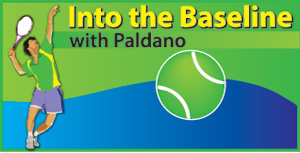Burst of speed in tennis, athletic Mensik and Eala
View(s):A burst of speed in any sport is a delightful spectacle. Athletics appeal to spectators and remembered for decades. With the hard courts coming to being, player development has emphasised the need-of-speed. A somersault from the Victorian norm of the elegance. Hard to believe in early days of tennis, style was criterion for event qualification.
Novak Djokovic appeared and mingled in 2005 with Rafael Nadal, Roger Federer, Pete Sampras and company. After 20 long year, he is still there and was in the threshold of winning 100 ATP titles when he played the final of the Miami Open. Even with love-hate relationship with global fans, he is there, Serbian tenacity.
Jakub Mensik
 Tennis popularity is surging upwards again. ATP and WTA events have the unique blend of city names and local cultural highlights. What more big events last a week or two but the vibes of the event stays round the year and even for decades. Along with it, winner’s names chime in every big opportunity, boosting their image and prestige.
Tennis popularity is surging upwards again. ATP and WTA events have the unique blend of city names and local cultural highlights. What more big events last a week or two but the vibes of the event stays round the year and even for decades. Along with it, winner’s names chime in every big opportunity, boosting their image and prestige.
Winning 100 ATP events is considered unachievable, now we have a man at 99, Novak Djokovic. Jakub Mensik is 19 years of age from Czech. The Bohemian home of many famous names. Mensik is 18 years and 100 days younger than Djokovic. He won the Miami Open 2025 beating Djokovic in straight set final, 7/6, 7/6. Mensik, prior to the event, ranked ATP 386, was a complete outsider for the title. His was a repeat fete of Tim Mayotte USA back in 1985. Mayotte played Andre Agassi then, with a huge age difference.
Rise of teenagers in WTA
The women’s title in Miami went to Aryna Sabalenka. She beat American Jessica Pegula. Alexandra Eala, 18 years of age, is from Philippines, and beat Iga Swiatek, Madison Keys, and Osterpenko on her run to the semi-final. An Asian with height and weight match global need. She developed in the ITF Junior Circuit. At 19, she can look forward for rosy future like her Asian counterparts. She has that make up in her player development.
Junior winning surge
The current streak junior winners began with Canadian development. Bianca Adreescu won the US Open title as a teenager. At that time Canada relatively low in player turnout, rolled out teenagers in both gender for good eight years ago. While the whole world went to elegance and effectiveness stroke making, regardless with angular or lineal stroke making Canadians went for speed of movement and won. Firmly established athletic ability again to be the winning element in tennis. They defied restrictive stroke making needs.
2025 American season
Stroke making is elegant to watch and on clay and sand still hold its effectiveness in winning. Indian Wells and Miami in USA with few more events in the warmer belt of the American continent use the early spring before European season begins in April. They were on hard courts. In it players positioning in and out of the base line region. This is making the hard court fast game superfast. In equal terms, strain of this game is rolling out bandaged players and forced injury breaks.
Alexander Eala of Philippines
Eala’s appearance in the semi-finals of Miami Open of 2025 was surprise. She beat many Top 10 players in one event; that good she was. In height and in skill she matched ‘big guns’ and brought them down. Her development equals all others in the league. Her wins include against Madison Keys, Iga Swiatek and Osterpenko, all Top 10 in ranking.
Speed affects both sides
Downside in single’s power tennis is players themselves can be victim of their speed tactics. Working with less than a second for each stroke played, covering the large court and accommodating over a thousand shots makes tennis very tough. Tactically players have to evaluate their own speed at any time during the match to cover court. Often players skip this and are over run by seasoned opponents.
European Season
Very soon, European clay season will be on. Will end with the French Open Grand Slam in Paris as the finishing event. Italians are strong here in men and women. It is also is the home of the eastern Europeans. For Mensik a Chechen, his home grown surface. Nothing will be easy for the professionals in Europe. It is the most intense clay court competition.
Players to follow this year in Europe will be from Eastern European, Southern Europe, sand court specialists of South America, Asians from Kazakhstan to Tokyo lengthwise and from South Korea to Philippines breadthwise.
The Top 10 of WTA and ATP are not that fresh anymore but then if they do not perform well in Europe it will be their curtain call time. For all good players this is painful period of uncertainty. Many European tennis associations have come in to accommodate their past players.
–George Paldano, European and Asian competition player; coach German Tennis Federation; National coach Brunei and Sri Lanka; Davis Cup, Federation Cup coach, coached ATP, WTA and ITF ranked players in Europe and Asia; WhatsApp +94775448880–


